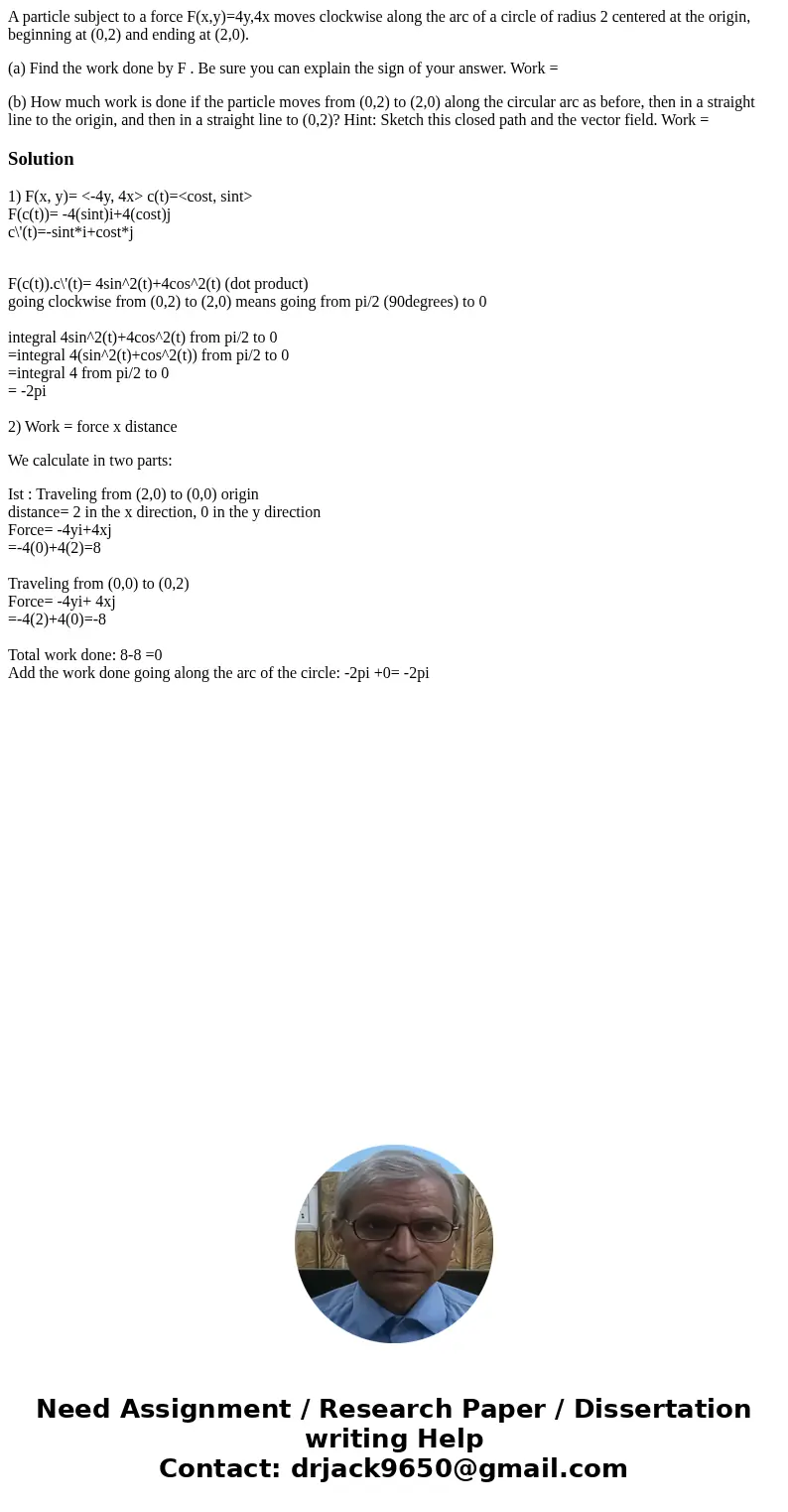A particle subject to a force Fxy4y4x moves clockwise along
A particle subject to a force F(x,y)=4y,4x moves clockwise along the arc of a circle of radius 2 centered at the origin, beginning at (0,2) and ending at (2,0).
(a) Find the work done by F . Be sure you can explain the sign of your answer. Work =
(b) How much work is done if the particle moves from (0,2) to (2,0) along the circular arc as before, then in a straight line to the origin, and then in a straight line to (0,2)? Hint: Sketch this closed path and the vector field. Work =
Solution
1) F(x, y)= <-4y, 4x> c(t)=<cost, sint>
F(c(t))= -4(sint)i+4(cost)j
c\'(t)=-sint*i+cost*j
F(c(t)).c\'(t)= 4sin^2(t)+4cos^2(t) (dot product)
going clockwise from (0,2) to (2,0) means going from pi/2 (90degrees) to 0
integral 4sin^2(t)+4cos^2(t) from pi/2 to 0
=integral 4(sin^2(t)+cos^2(t)) from pi/2 to 0
=integral 4 from pi/2 to 0
= -2pi
2) Work = force x distance
We calculate in two parts:
Ist : Traveling from (2,0) to (0,0) origin
distance= 2 in the x direction, 0 in the y direction
Force= -4yi+4xj
=-4(0)+4(2)=8
Traveling from (0,0) to (0,2)
Force= -4yi+ 4xj
=-4(2)+4(0)=-8
Total work done: 8-8 =0
Add the work done going along the arc of the circle: -2pi +0= -2pi

 Homework Sourse
Homework Sourse